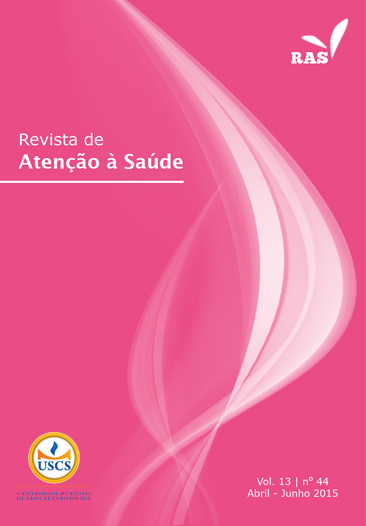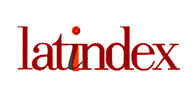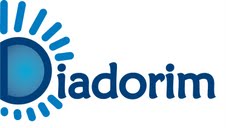LIFESTYLE AND ASSOCIATED FACTORS IN PHYSICAL EDUCATION UNDERGRADUATE STUDENTS
DOI:
https://doi.org/10.13037/ras.vol13n44.2693Keywords:
Lifestyle, students, associated factors, distance educationAbstract
Introduction: Patterns of behavior that constitutes the spheres of lifestyle and its relationship withindependent factors has been the subject of study of many researchers in the field of health. College studentsare particularly constant targets by this kind of research because they are configured as a group that thereis an increased rate of the risk factors. Objective: Verify the global rating of lifestyle and relationship withthe domains of lifestyle on Physical Education bachelor students of the distance learning education froma public university in the state of Paraná. Methods:The sample consisted of 204 students of both genders(50.8% males) with a mean age of 33. 5±8.3. Questionnaires were used to obtain data on demographicand socioeconomic conditions, and also lifestyle. Independence was analyzed using Chi-square test,performed to investigate the dependence between the variables. Results: By the results obtained from theanalysis of dependence between variables it was possible to see that the areas most affected (p<0.05) onthe lifestyle of the students were related to affective aspects (family), psychological, or emotional (stress,behavior/satisfaction), and work. Conclusions: Socialization, a balanced diet, sleeping well, manage the stress of everyday life, relax and enjoy the free time and think positively and optimistically are some of the factors that may becontributing to the greater likelihood of a proper lifestyle among university.Downloads
References
1. Leite T, Santos B. Pressão arterial e estilo de vida de estudantes universitários. Rev Bras Ciên Saúde. 2011;9(27):14-20.
2. World Health Organization. The World Health Report 1998: Life in the 21st century a vision for all. WHO: 1998.
3. Rozmus C, Evans R, Wysochansky M, Mixon D. An analysis of health promotion and risk behaviors of freshman college students in a rural southern setting. Pediatr Nurs. 2005;20(1):25-33.
4. Joia L. Perfil do estilo de vida individual entre estudantes universitários. Rev Movimenta. 2010;3(1):16-23.
5. Palma A, Abreu R, Cunha C. Comportamentos de risco e vulnerabilidade entre estudantes de educação física. Rev Bras Epidemiol. 2007;10(1):117-26.
6. Cardoso B, dos Santos M, Berardinelli L. A relação estilo de vida e tabagismo entre acadêmicos de enfermagem. Rev Eletrônica Enferm. 2009;11(2)368-74.
7. Franca C, Colares V. Estudo comparativo de condutas de saúde entre universitários no início e no final do curso. Rev Saúde Públ. 2008;42(3):420-7.
8. Martins G, MR S, Prates M, Martins G. Análise dos parâmetros de qualidade e estilo de vida de universitários. Rev Mackenzie Educ Fís Esporte. 2012;11(1):22-30.
9. Paixão L, Dias R, Prado W. Estilo de vida e estado nutricional de universitários ingressantes em cursos da área de saúde do Recife/PE. RBAFS. 2012;15(3):145-50.
10. Moraes M, Laat E, Lara L, Leite G. Consumo de álcool, fumo e qualidade de vida: um comparativo entre universitários. Cinergis. 2011;11(1):86-94.
11. Santos G, Venâncio S. Perfil do estilo de vida de acadêmicos concluintes em educação física do centro universitário do leste de Minas Gerais UNILESTE-MG. Movimentum. 2006;1:1-18.
12. Silva D. Nível de atividade física e fatores associados em acadêmicos de educação física de uma universidade pública do nordeste do Brasil. RBAFS. 2012;16(3):193-8.
13. Vargas L, Redkva P, Cantorani J, Szesz Junior A, Pilatti L, Gutierrez G. Validação dos questionários eltrônicos IPAQ e Estilo de Vida Fantástico em estudantes universitários de Educação Física na modalide a distância. RBQV. 2013;5:9-18.
14. Pesquisa ABCDE. Critério de classificação Econômica Brasil. São Paulo. 2012. p. 3.
15. Baretta E, Baretta M, Peres K. Nível de atividade física e fatores associados em adultos no Município de Joaçaba, Santa Catarina, Brasil. Cad Saúde Públ. 2007;23(7):1595-602.
16. Añez C, Reis R, Petroski E. Versão brasileira do questionário” estilo de vida fantástico”: tradução e validação para adultos jovens. Arq Bras Cardiol. 2008;91(2):102-9.
17. Wilson D, Nielsen E, Ciliska D. Lifestyle assessment: testing the FANTASTIC instrument. Can Fam Physician. 1984;30:1863.
18. Barros MVG, Reis R, Hallal P, Florindo A, Farias Júnior J. Análise de dados em saúde. 3ª ed. Londrina: Midiograf; 2012.
19. Nahas M. Atividade física, saúde e qualidade de vida: conceitos e sugestões para um estilo de vida ativo. 2ª ed. Londrina: Midiograf; 2001.
20. Lovisolo H, Votre S, Costa V. Normas, utilidades e gostos na aprendizagem. In: Votre SJ, Costa VLMC, (editores). Cultura, atividade corporal e esporte. Rio de Janeiro: Editora Gama Filho; 1995:213-31.
21. Martins M, Ricarte I, Rocha C, Maia R, Silva V, Veras A, et al. Pressão arterial, excesso de peso e nível de atividade física em estudantes de universidade pública. Arq Bras Cardiol. 2010;95(2):192-9.
22. Reichert F, Barros A, Domingues M, Hallal P. The role of perceived personal barriers to engagement in leisure-time physical activity. Ame J Pub Health. 2007;97:515-9.
23. Mielke G, Ramis T, Habeyche E, Oliz M, Tessmer M, Azevedo M, et al. Atividade física e fatores associados em universitários do primeiro ano da Universidade Federal de Pelotas. RBAFS. 2012;15(1):57-64.
24. Castro Júnior E, Barreto L, Oliveira J, Almeida P, Leite J. Avaliação do nível de atividade física e fatores associados em estudantes de medicina de Fortaleza-CE. Rev Bras Ciênc Esporte. 2012;34(4):955-67.
25. Marcondelli P, Costa T, Schmitz B. Nível de atividade física e hábitos alimentares de universitários do 3º ao 5º semestres da área da saúde. Rev Nutr. 2008;21(1):39-47.
26. Simão C, Nahas M, Oliveira E. Atividade física habitual, hábitos alimentares e prevalência de sobrepeso e obesidade em universitários da Universidade do Planalto CatarinenseUNIPLAC, Lages. SC. RBAFS. 2012;11(1):3-12.
27. Bielemann R, Karine G, Azevedo M, Reichert F. Prática de atividade física no lazer entre acadêmicos de Educação Física e fatores associados. RBAFS. 2012;12(3):65-72.
28. Silva G, Bergamaschine R, Rosa M, Melo C, Miranda R, Filho M. Avaliação do nível de atividade física de estudantes de graduação das áreas saúde/biológica. RBAFS. 2007;11:3-12.
29. Fontes A, Vianna R. Prevalence and factors related to low level physical activity among university students in a public university in the northeast region of Brazil. Rev Bras Epidemiol. 2009;12(1):20-9.
30. Santos J. Estilo de vida relacionado à saúde de estudantes universitários: comparação entre ingressantes e concluintes [tese]. Porto: Universidade Fernando Pessoa; 2011.
31. Vieira D, Ribeiro M, Romano M, Laranjeira R. Álcool e adolescentes: estudo para implementar políticas municipais. Rev Saúde Públ. 2007;41(3):396-403.
32. Insituto Nacional do Cancêr. Pesquisa especial de tabagismo – PETAB: relatório Brasil. Rio de Janeiro: INCA; 2011.
33. Malagris L, Suassuna A, Bezerra D, Hirata H, Monteiro J, Silva L, et al. Níveis de estresse e características sociobiográficas de alunos de pós-graduação. Psicol Rev. 2009;15(2):184-203.
34. Paiva R. Integração de ciclovias com outros modos de transporte. Workshop Internacional sobre Planejamento e Implementação de Sistemas Cicloviários; 2006; Guarulhos.
Downloads
Published
Issue
Section
License
Copyright (c) 2015 Leandro Martinez Vargas, Paulo Eduardo Redkva, José Roberto Herrera Cantorani, Gustavo Luis Gutierrez

This work is licensed under a Creative Commons Attribution-NonCommercial-NoDerivatives 4.0 International License.
Policy Proposal for Journals offering Free Delayed Access
Authors who publish in this magazine agree to the following terms:
- Authors maintain the copyright and grant the journal the right to the first publication, with the work simultaneously licensed under a Creative Commons Attribution License after publication, allowing the sharing of the work with recognition of the authorship of the work and initial publication in this journal.
- Authors are authorized to assume additional contracts separately, for non-exclusive distribution of the version of the work published in this magazine (eg, publishing in institutional repository or as a book chapter), with the acknowledgment of the authorship and initial publication in this journal.
- Authors are allowed and encouraged to publish and distribute their work online (eg in institutional repositories or on their personal page) at any point before or during the editorial process, as this can generate productive changes, as well as increase impact and citation of the published work (See The Effect of Open Access).









